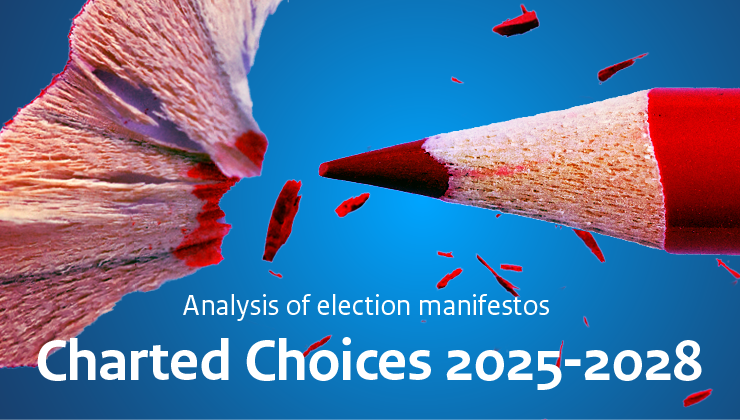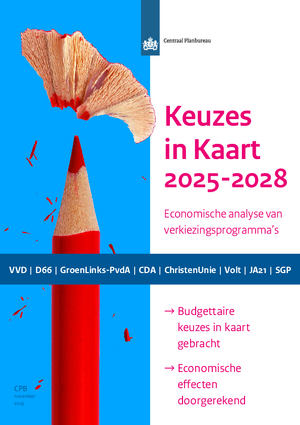Charted Choices 2025-2028
CPB presents 11th edition election manifestos analysis

Participation in ‘Charted Choices’ is voluntary. VVD, D66, GroenLinks-PvdA, CDA, ChristenUnie, Volt, JA21 and SGP took up the offer of having the calculations carried out on their manifestos. CPB Director Pieter Hasekamp: “The calling of early elections put greater pressure on CPB and the political parties in what is usually already an intensive process. Despite the short preparation time, the parties succeeded in detailing a wide range of policy measures. Issues such as the future of the allowances scheme and the theme of socioeconomic security are reflected in the choices made by all parties, although there are major differences in their approaches.”
Choices and trade-offs
The calculations provide a concrete basis for the parties’ plans and apply the same criteria to each party to allow proper comparison of the budgetary and economic consequences of the policy choices. For the first time, this edition of Charted Choices also calculates the consequences for the extent of poverty in the Netherlands. Policy choices involve trade-offs; increased expenditure can bolster purchasing power, for example, but may also lead to a deterioration in the budget balance. The calculations map out these factors.
Not a voting advice tool
CPB calculates the budgetary and economic effects of measures. But that is just one aspect of the policy choices before general elections, so the calculations are not intended to provide voting advice. VVD, D66, GroenLinks-PvdA, ChristenUnie and Volt also asked PBL Netherlands Environmental Assessment Agency to calculate the consequences of other aspects. Please see the PBL website for further information.
The translation of chapter 1 of the Dutch publication 'Keuzes in Kaart' will be published as soon as possible.
Questions and answers:
Why do the calculations not include all election manifestos?
Participation is voluntary. The calculations are part of a short but intensive process that requires a lot of CPB capacity. To guarantee quality, it is not possible to include the manifestos of all parties running in the House of Representatives elections – this time there are 26. For this reason, invitations were extended only to the parties that won seats in the previous House of Representatives elections.
How many parties took part last time?
Ten parties took part in 2020. This year, JA21 and Volt are participating for the first time, whereas the other parties also participated in the previous edition. At that time, PvdA and GroenLinks were still participating as two separate parties.
Are there any differences in approach compared to the previous Charted Choices?
The approach is largely the same. The main substantive difference compared to 2021 is that, given the shorter preparation and lead time, this edition does not report any long-term indicators, such as the financial burden on future generations, although longer-term effects have been qualitatively assessed where relevant. For the same reason, only measures above a budgetary lower limit of €200 million have been included in the calculations. In 2021, the lower limit was €100 million. An addition compared to the previous edition is the inclusion of the poverty indicator, which CPB has included as standard in the description of income effects since the summer of 2022.
U kunt de videoregistratie bekijken van de persconferentie in perscentrum NieuwsPoort waar CPB en PBL de doorrekeningen op 8 november 2023 hebben gepresenteerd.
De doorrekening van de verkiezingsprogramma’s is beschikbaar in de vorm van te downloaden PDF-bestanden met uitleg en verwijzingen. Daarnaast is er een interactieve datavisualisatie, die inzicht geeft in de onderlinge verschillen tussen partijen. Bekijk ook de presentatie die gebruikt is tijdens de persconferentie. Alle relevante CPB-publicaties voor deze doorrekening zijn ook te vinden op de verkiezingen-tijdlijn.
